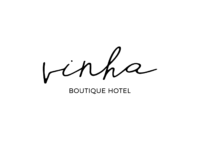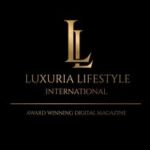June 28, 2022
What’s damaging my hair and how can I fix it?
Our hair goes through a lot on a daily basis – washing, brushing, being tied up and even being exposed to various pollutants and climates. All of these can have an impact on the condition of your hair.
Common signs of damaged hair are showing a frizzy or wiry appearance, feeling dry and looking split or frayed at the ends. With the proper maintenance and changes in your daily hair-care routines, your luscious locks will be back in no time.
In this post, we have a closer look at what the most common causes of hair damage are and how you can rectify them.
Chemicals
It’s common knowledge that many colour and styling products can contain harsh chemicals that leave lasting damage to your hair’s health. Fortunately, there are some permanent hair colour solutions and bleaches available that aren’t as harmful and even include conditioners that help to restore any harm done during the treatment.
It is, however, a lesser-known fact that a lot of everyday hair-care products such as shampoos and conditioners contain high quantities of unfriendly ingredients that can have negative impacts on the condition of your hair.
Examples of such chemicals include:
– Sulphates
– Parabens
– Phthalates
– Polyethene Glycols
– Formaldehyde
A lot of these substances are found in cheaper, commercial shampoos and conditioners and can leave your hair feeling dry and lifeless. Try opting for products containing more natural ingredients such as aloe vera, essential oils and natural extracts. They may be a little pricier, but you may find that they are of better value and work wonders on your hair!
Excessive Brushing
Did you know that there are even do’s and don’ts around hair brushing? We all have our unique methods but are we creating more damage with each stroke?
Experts have suggested that an average of twice a day is the ideal amount depending on your hair type. Consultant trichologist, David Adams explains that excessive brushing can increase the likelihood of split ends by damaging the hair cuticles from too much friction.
Furthermore, a crucial factor is ensuring that you are using the correct type of brush. If you have fine hair, you will want something gentler on the strands such as a detangling brush with soft bristles. For thicker, more wavy hair, a brush with more bristles made of nylon may be a better choice.
Heat
Frequent exposure to heat has the potential to weaken the structure of your hair strands and creates long-lasting and even permanent damage. Common culprits include curling irons, straighteners and blow dryers.
Unfortunately, as heat damage is often irreversible, a common recommendation is to opt for the chop. However, there are prevention methods and ways of managing the health condition of your hair whilst trying to grow it out.
A common sign of heat damage is dryness and split ends so go for regular trims and give your hair lots of hydration through good quality hair masks and organic, leave-in conditioners.
This isn’t to say that you can never use your heat styling tools, however, it is advised that you keep use to a minimum. It is also recommended that temperatures should be set to no higher than 148 degrees Celsius (300 Fahrenheit).
Diet
A lack of micronutrients in your diet can have a major impact on the quality of your hair. Like the rest of your body, your hair needs the right nutrients to grow and keep healthy and such deficiencies have been connected to hair loss and thinning.
The main nutrients that can affect your hair are essential vitamins, zinc, iron, protein and essential fatty acids.
Let’s have closer look at each –
Vitamins: These include A, B12, C, D and E and can be found in leafy greens, fish, red meats, and seeds.
Zinc: This is vital for the growth and repair of your hair and can be found in whole grains, red meat, seeds, dairy, and eggs.
Iron: Similar to zinc, iron aids in hair growth and deficiencies are commonly linked to hair loss. Iron-rich foods include beans, red meat, dried fruit and fortified cereals.
Proteins: Around 85 per cent of your hair is made up of keratin, a protein that gives your hair strength. Protein-rich foods include cheese, red meats, fish, quinoa, greens and tofu.
Essential fatty acids: More generally known as omega-3 and are vital for the development of healthy cell membranes and boosting hair growth. Foods containing essential fatty acids include olive oil, sunflower oil, oily fish such as salmon or mackerel, walnuts and avocados.
Have you been guilty of not giving your hair the treatment it deserves? Give your hair some TLC by following the above tips and we promise you’ll be amazed by the results.





